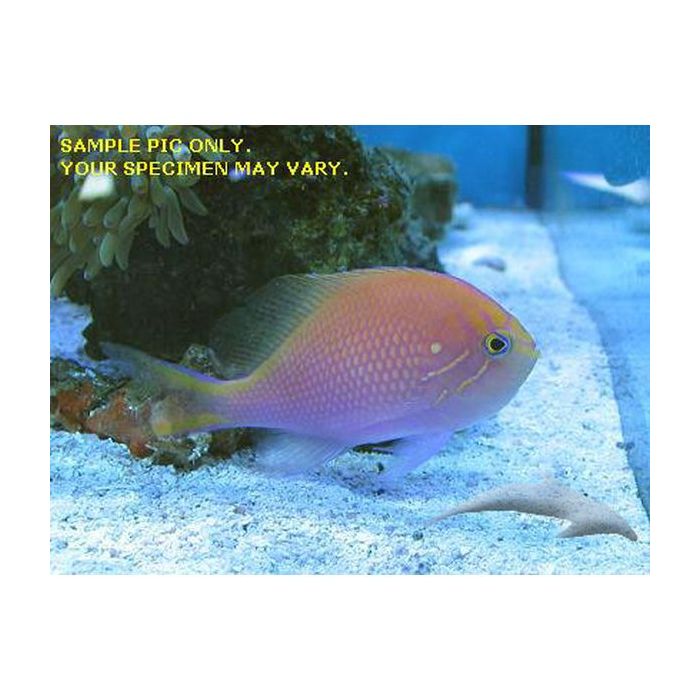Sunburst Anthias (Asia Pacific)
Anthias are active, colorful, reef safe, and generally quite peaceful fish. They pose little to no danger to any other aquarium inhabitant, other than small competing zooplanktivores, such as dart fish and flasher wrasses, which they may chase into hiding.
The key to success with anthias is frequent feeding. Because of their activity level they have a very high metabolic rate, and should be fed a minimum of three times daily. Diet should include plenty of high quality meaty items such as frozen Mysis shrimp, marine algae and Spirulina, enriched brine shrimp and Calanus. Anthias are such enthusiastic feeders they usually learn to eat dry foods quickly, but if they are fussy the dry food can be mixed in with the frozen to encourage consumption. A refugium is helpful in supplementing the main aquarium with live prey items. Additional supplements and vitamins may also aid in maintaining the fish's vivid colors.
Anthias are prone to jumping from the aquarium when startled or excited so we recommend a secure lid.
In the wild most anthias species are found in huge shoals consisting of mainly females and juveniles. In the aquarium they are perfectly happy alone, but if a shoal is desired the aquarium must be of sufficient size to ensure the smallest and weakest fish have space to escape the larger and more aggressive members. A group of at least six females added together can work, and in time the largest fish transforms into the dominant male. He is typically brighter and more colorful than his harem. If he will be added together along with his shoal then as many females and juveniles as possible should be added.
Like the most beautiful sunset you can imagine, the Sunburst anthias delivers. Incredible intense yellow coats its back, trickling down onto its magenta belly. Two electric stripes run from its eyes, with a spot of the same hue above its pectoral fins. Tiny freckles like drops of sunlight coat its fins. It has a uniquely stocky shape and a large head, and is also known as the Fat Head anthias. The two sexes look alike, however males are larger. If added together they may be kept in a group. They prefer dim lighting initially, and plenty of rocks and overhangs to feel secure. Although shy when newly introduced they become bolder in time. We typically receive this fish from Fiji. It grows up to 5 inches; we recommend an aquarium of at least 75 gallons for a single fish, larger for a group.
















